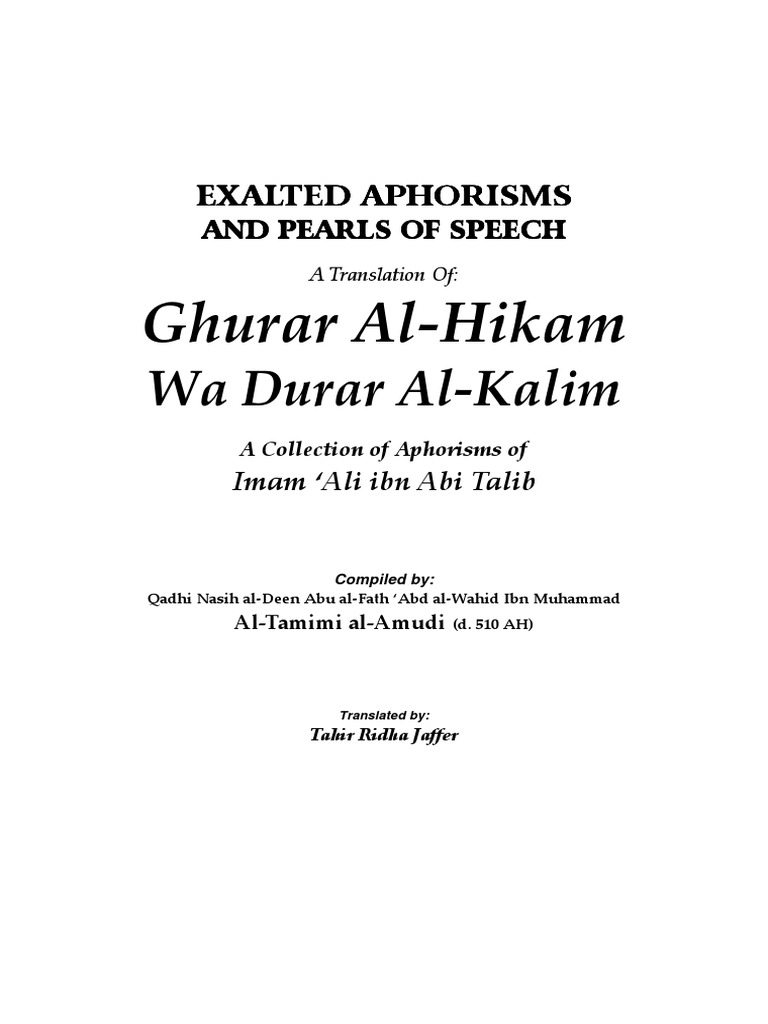The text also surveys the complexity of human emotions, such as love, envy, and anger. Each emotion is presented not only as a natural aspect of the human experience but also as a trial that demands self-mastery. “Ghurar al-Hikam” speaks to the duality of human nature, delineating how these emotions can catalyze both spiritual elevation and moral degradation. The nuances of such feelings are explored, inviting readers to engage in self-reflection and to cultivate their emotional intelligence, thus aligning their inner lives with the aspirations of the Shia faith.
Moreover, the themes of patience and perseverance recur throughout the text, echoed in the teachings of the Imams. These virtues are quintessential in navigating the vicissitudes of existence. In a world that often prizes immediate gratification, “Ghurar al-Hikam” champions the strength found in resilience. This perspective on struggle correlates with a broader understanding of life as a test—a fundamental tenet of Shia belief. Each trial faced is perceived not as an obstacle but as an opportunity for growth and spiritual refinement.
Another pivotal teaching found within “Ghurar al-Hikam” pertains to the significance of community and collective identity. The text articulates that individual spirituality does not exist in isolation but is interwoven within the greater tapestry of the ummah (community). This recognition fosters a sense of solidarity and interconnectedness among believers, urging them to support one another in the pursuit of divine knowledge and justice. The moral responsibilities of individuals towards their community are woven throughout its teachings, creating a sense of urgency surrounding active engagement and advocacy.
Tags
Share this on:
[addtoany]


